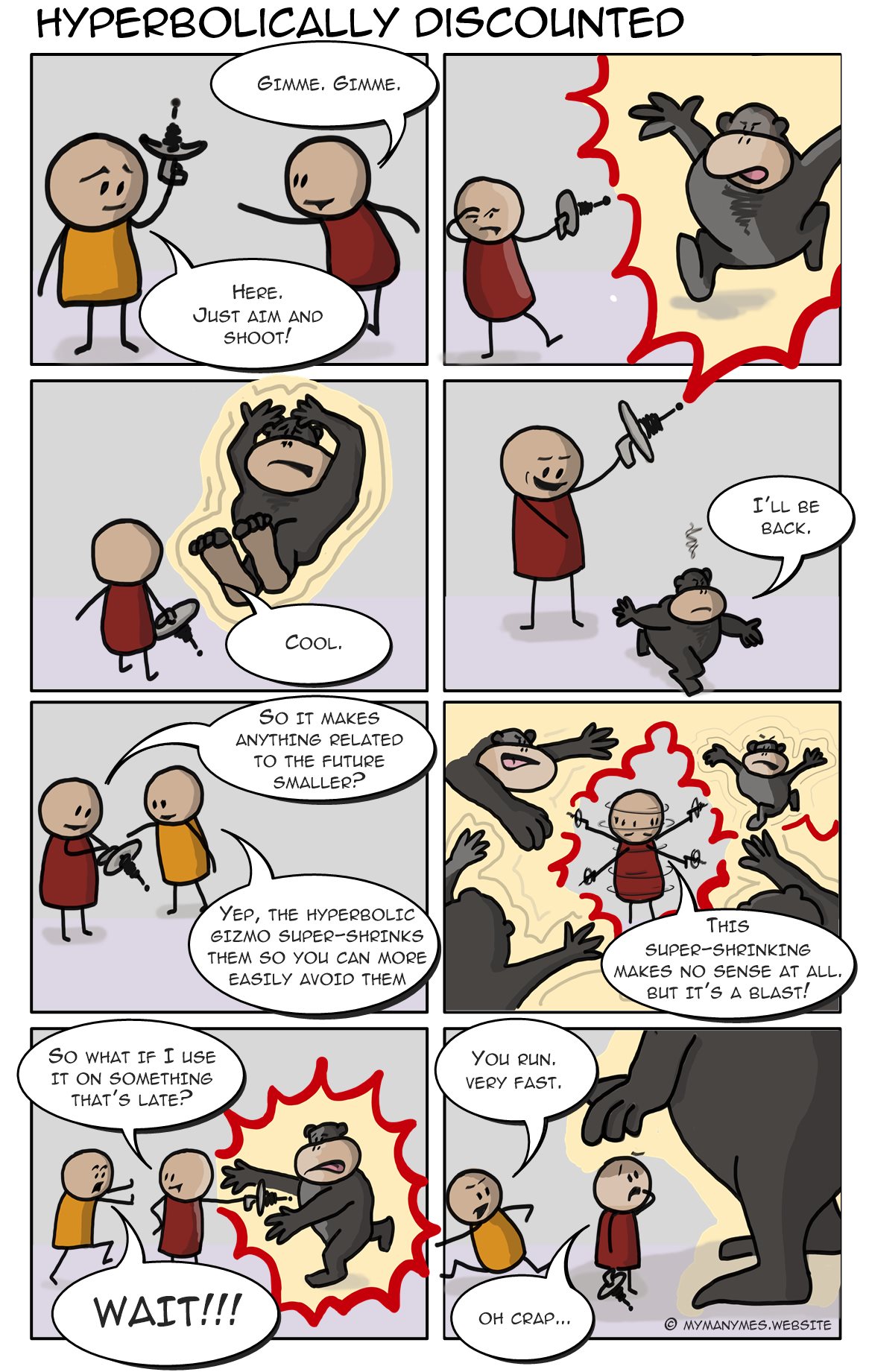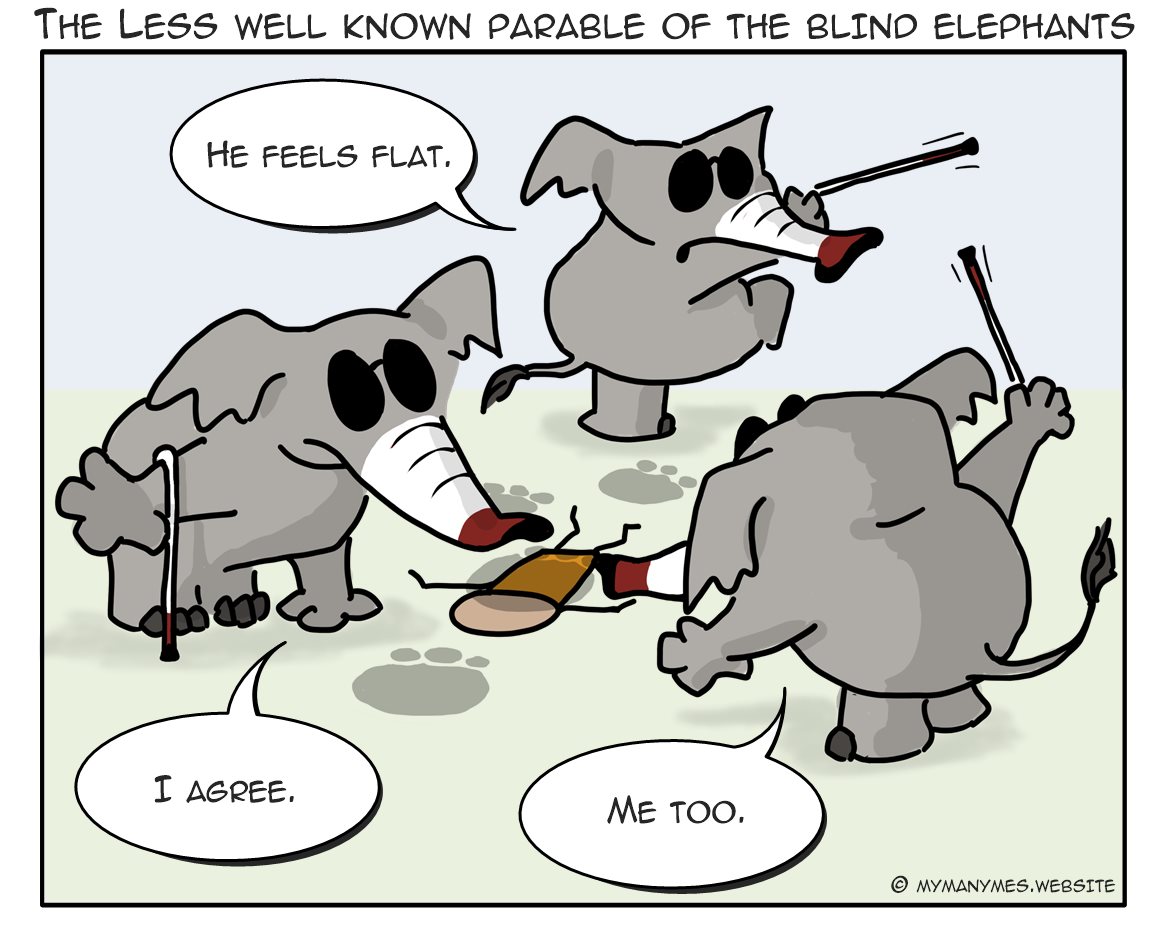Shoot for Now. Ask Questions Later.

Deadline gorillas. They chase us to get that assignment done or to fill in tax returns. Unfortunately for them, we soon learn how to avoid them. In our heads, we somehow make the less urgent ones seem smaller and less significant. This mental trick is called hyperbolic discounting but the result is all too familiar; procrastination.
Hyperbolic discounting is the fancy scientific name given to the way we prefer something sooner than later even if, objectively, waiting is better. It's because we don't tend to value future rewards properly and instead we are in love with the "now".

I know that hyperbolic discounting sounds like it reduces things but that's not always the case. Think of it as dividing. In general, dividing makes things smaller. However, if the number you divide by is small enough, it actually makes things bigger. Let's say this number you divide by represents the time you have left until the deadline. If there's an uncomfortably short amount of time to finish the task, then that number we're dividing by is also uncomfortably small. Wait long enough and hyperbolic discounting sees to it that deadlines get big and scary.
Procrastination expert Piers Steel in his book the Procrastination Equation tells us that impulsiveness is the main reason people procrastinate. His equation states that our motivation to perform a task is equal to the value we place on it adjusted by its likelihood or expectancy divided by the time that we have to wait or its delay and by how impulsive we are. Impulsive people are addicted to their hyperbolic discounters and use them every chance they get. For them, life can be a rollercoaster; at times they are dodging important tasks to pursue short term distractions and at other times they rush to meet deadlines when things become urgent.

Oh, and did I mention, not only do we have our deadline gorillas but we also have our distraction monkeys who pull us away from what we know we should be doing? They play video games with us, they check out social media sites, and they persuade us to hang out with our friends. They steal our time and prevent us from working on our long term goals.
The Elephant and the Visually Impaired
Ask one person why he or she procrastinates and you get one answer, ask someone else and you get another. There are so many differing theories about procrastination that it reminds me of an ancient parable originally from India but has since passed into the lore of many cultures. It goes like this. Once upon a time, some blind men are introduced to an elephant for the very first time. The first grasping the elephant's tail declares it to be like a brush. The second putting his arms around one of its legs, claims it to be a tree. Yet another feeling the trunk, confidently announces an elephant is like a snake. The fourth holding the ears, describes the elephant as a sheet of leather. None of their opinions are entirely wrong, the men have just approached the animal from different angles. As each blind man feels his way around the whole of the elephant, they discover that there is truth in what each other had said.

Gorillas and monkeys may not be as elegant as an equation but they are a different and colourful way of understanding the how and why of procrastination. These characters form part of the My Many Me's theory. A theory that proposes different parts of our brains have different agendas and they compete to control our behaviour. How hard they push or pull are based on thought processes optimised for an environment very different to our current one and hence our behaviour often appears irrational. Applying a more primitive mentality to a situation often gives us an insight into why we behave the way we do. Well, that's the grey matter of the idea; this then evolved into a series of comics in glorious 24 bit colour.
The characters from My Many Me's are used to explain our motivation to do a particular thing over everything else. At any given time we are subconsciously applying the Procrastination Equation to all the different things we could do. Each monkey or gorilla represents a motivation or de-motivation and each is working out his or her own answer to the equation. Whoever comes up with the biggest number wins and gets to decide what we do. It's a tug of war between all our monkeys and gorillas as they pull or push us in all directions like invisible forces.
Mind Candy
My Many Me's and the Procrastination Equation help us identify specific causes and the most effective solutions are the ones that target the underlying causes. No one has come up with a single foolproof method to cure procrastination. No one has yet devised a diet that works for everyone either. The real world offers too much temptation so it's not really possible in a single post to add much to what has not already been covered by many other posts giving advice and tips. The key takeaway here is that we need review the reasons for our delays. Once this is done, practical steps can be found in Piers Steel's book or at the My Many Me's website.
Piers Steel tells us his advice is pharmaceutical grade. And like some of the most potent medicine, you take it because you know you need it. It's the injection, the bitter pill, the enema. However, procrastination affects almost all of us and prevention is better than a cure. In the same way, we live healthier lives by cutting down on smoking, alcohol and high fat/sugar diets. My Many Me's is what you find at the end of the aisle or next to the checkout. It's mind candy. It's the patch, the sugar coated pill, the strawberry flavoured suppository. You take it, not because you have to, you take it because you like the taste.
You can find out more about My Many Me's at www.mymanymes.website.
* an asterisk at the end of a link means that if you click this link you will be taken to another site.
